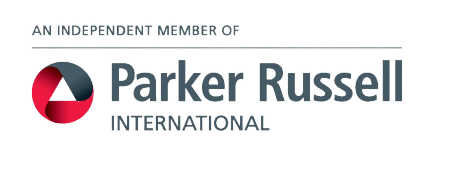Companies and the use of alphabet shares
Did you know that in order to comply with company law requirements, dividends must be paid to shareholders with the same class of shares in proportion to their shareholdings. However, with the use of alphabet shares you can overcome this restriction providing flexibility when declaring dividends.
We asked Anand our Corporate Tax Director to answer a few questions on Alphabet shares. What are Alphabet Shares? What are the advantages of an Alphabet Share structure? What is the legislation surrounding alphabet shares that we need to be aware of?
Use of alphabet shares – what are alphabet shares?
Where a company adopts an alphabet shareholder it will typically have a different class of share for each shareholder, i.e., “A” ordinary shares for one shareholder, ”B” ordinary shares for another shareholder, “C” ordinary shares for another shareholder, and so on.
This provides a number of advantages over a share structure where the company has a single class of share, and all shareholders hold that class of share.
Advantages of an alphabet share structure
The main advantage of an alphabet share structure is to provide flexibility. Having different classes of share means that different rights can be ascribed to different shareholders. For example, some shares may carry voting rights and rights to assets in a winding up, whereas others may only carry a right to a dividend.
Using an alphabet share structure is also advantageous from a tax planning perspective as it allows profits to be extracted in a tax efficient manner, tailoring the dividends paid to the shareholder’s circumstances.
Great care needs to be taken in ensuring that anti-avoidance rules are not tripped into when issuing alphabet shares with different rights or when share rights are varied after issue.
Use of alphabet shares – creating a new class of share
Ideally, the company should be set up with an alphabet share structure from the outset. However, where this is not the case, it is usually straightforward to create new classes of shares where this is permitted by the articles of association. Where the company is formed with model articles, new classes of shares can be created by ordinary resolution. These should be allotted and paid for in cash. Details of the share issue should be shown on Form SH01 which is then submitted to Companies House.
It is prudent to consider in advance what you want to achieve from the alphabet shareholder and ascribe the rights accordingly. Consideration should be given not only immediate requirements, such as the need to tailor dividends, but also to future requirements. For example, business asset disposal relief is only available on the disposal of shares in an individual’s personal company if the individual has both a minimum of 5% of the shares and 5% of the voting rights.
Beware the settlements legislation
When creating a new class of share to facilitate the tax efficient extraction of profits, it is necessary to be mindful of the settlements legislation. This is anti-avoidance legislation that HMRC may try to invoke if they suspect the shares are being created to divert income from one shareholder to another so that it is taxed at a lower rate. Ensuring the new class of share contains a ‘bundle of rights’ i.e. is not just dividend, will counter any challenge.
Use of alphabet shares – utilising unused dividend allowances
In a family company scenario, an alphabet share structure can be used to make use of the dividend allowances of family members who work outside the company, but who do not have any other dividend income.
The dividend allowance is an allowance that is available to all individuals regardless of the rate at which they pay tax. The allowance is really a nil rate band rather than an allowance. Dividends are taxed at a zero rate to the extent that they are sheltered by the ‘allowance’.
The dividend allowance is £500 for 2024/25, having been reduced from £1,000 for 2023/24.
The reduction in the dividend allowance reduces the attractiveness of alphabet shares as a mechanism for using up the dividend allowances of family members. However, tax savings remain available.
Example
A Ltd is a family company.
Mr A owns 100 A ordinary shares. His wife owns 100 B ordinary shares. His three daughters own, respectively, 100 C ordinary shares, 100 D ordinary shares and 100 E ordinary shares.
Mr and Mrs A both pay tax at the higher rate. None of their daughters have other dividend income.
To make use of their dividend allowances to extract profits from the company, a dividend of £5 per share is declared for C, D and E ordinary shareholders, so each receives a dividend of £500, using up their 2024/25 dividend allowance. No tax is payable as the dividends are sheltered by the allowances, allowing the family to extract £1,500 of profits tax-free.
Had the dividend of £1,500 been paid to A or B ordinary shareholders, the dividend would have been taxed at the higher dividend rate of 33.75%, generating a tax bill of £506.25 (£1,500 @ 33.75%).
If one of the daughters, say the daughter with the C ordinary shares, had already used her £500 dividend allowance (leaving none available), the dividends declared could be tailored to pay no dividend to the C ordinary shareholder, while paying a dividend of £5 per share to D and E ordinary shareholders to use their full £500 dividend allowance.
The use of alphabet shares allows the dividends to be tailored to the shareholder’s circumstances to extract profits free of income tax.
Using lower tax bands
An alphabet share structure also allows dividends to be tailored to make use of lower tax bands, reducing the tax payable on the extracted profits. For example, if one spouse has some of their basic rate band remaining, it make sense to use this up before paying dividends that would be taxed at the upper dividend rate.
Example
B Ltd is a family company. Mr B has 100 A ordinary shares and Mrs B has 100 B ordinary shares. Before paying dividends, Mr B has income of £30,270 for 2024/25 and Mrs B has income of £40,270.
Mr B has £20,000 of his basic rate band remaining and Mrs B has £10,000 of her basic rate band remaining.
The company pays out profits of £30,000 to use the remaining basic rate bands, paying a dividend of £200 per share to A ordinary shareholders (a dividend of £20,000) and a dividend of £100 per shares to B ordinary shareholders (a dividend of £10,000).
The first £500 of each dividend is sheltered by the dividend allowance, and the remainder is taxed at the dividend ordinary rate of 8.75%.
In the absence of an alphabet share structure, had each held 50% of the shares, each spouse would have received a dividend of £15,000 if £30,000 been paid out by way of dividends. In this scenario, £5,000 of Mrs B’s dividends would be taxed at the dividend upper rate of 33.75% while £5,000 of Mr B’s basic rate band remained available.
Using an alphabet share structure allows dividends to be tailored to extract profits in a way that minimises the tax payable.
We can help…
RPGCC can help you formulate a tax-efficient dividend policy and explain the associated tax implications. If you would like to speak to a member of our Corporate Tax team about the use of alphabet shares or indeed any area of corporate tax please contact us or telephone 020 7870 9050.



